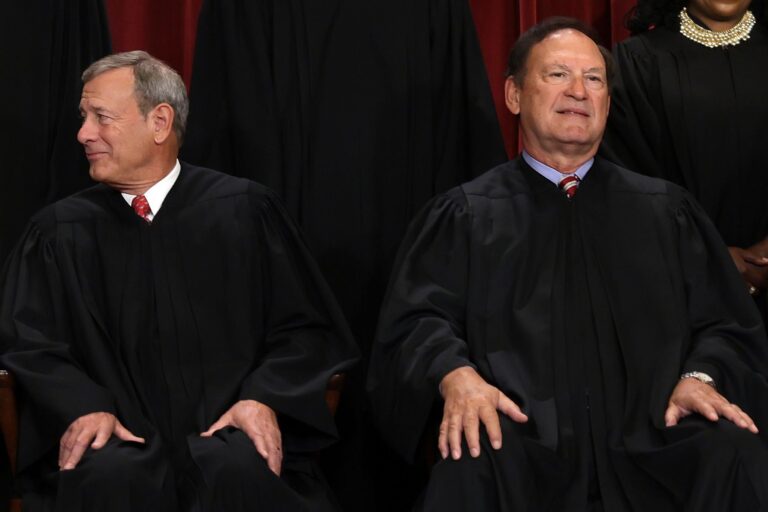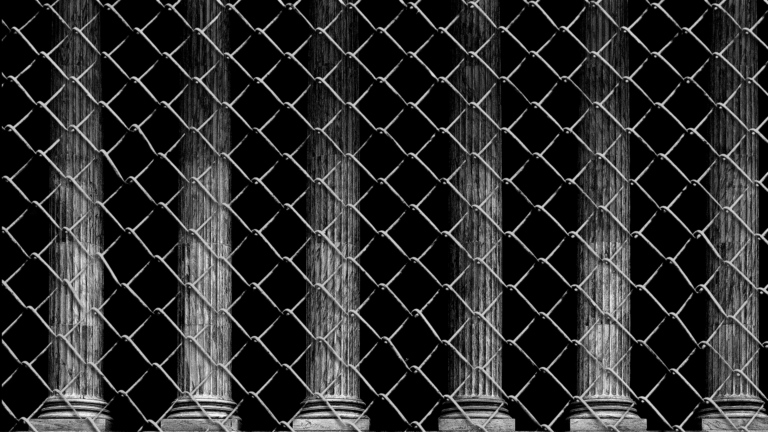The end of affirmative action
Watch This
Hosted by ChangeLawyers, ACS Bay Area, and Equal Justice Society on November 15, 2022.
Watch here
Superior Court Judge roasts Alito
More of This

On Tuesday, Georgia Superior Court Judge Robert C.I. McBurney struck down Georgia’s six-week abortion ban in a thundering decision that, at least for now, restores Georgia residents’ right to choose. McBurney’s ruling drew the most attention (and criticism) over a footnote that assailed the Supreme Court’s 5–4 reversal of Roe v. Wade as the product of “basic math” rather than “some mystical higher wisdom.” At first glance, this passage might appear to be a gratuitous potshot at the five justices who overturned Roe. But it is actually crucial to McBurney’s entire constitutional analysis—as well as his counterintuitive assertion that the state legislature may easily and lawfully reenact the exact law that he just struck down.
Read the story on Slate
Saving the Courts is an emergency. Start confirming federal judges now.
Say It Louder

Caleb Hayes-Deats is a member of the American Constitution Society and pro bono co-chair of its D.C. Lawyer Chapter.
A federal judge in Texas on Nov. 10 enjoined President Joe Biden’s plan to cancel billions of dollars in student debt. The decision is a striking reminder of the importance and power of the federal judiciary, if any was needed.
But the federal judiciary is also understaffed. It currently has 89 vacancies, with another 30 on the way due to previously announced retirements. Confirming federal judges is thus among the most influential actions the Senate can take during the lame-duck session. Senators should hold a floor vote on at least 30 judicial nominees before the new Congress begins on Jan. 3.
Read the story on Bloomberg Law
What has happened to SCOTUS?
Speaking Of...

Back in may, after waves of protesters converged on the Supreme Court in response to the leak of the draft opinion that would overturn Roe v. Wade, a black fence appeared around the Court’s perimeter. Eight feet tall and deemed “unscalable” by the authorities, it offered an eerie echo of how the Court’s neighbor on Capitol Hill had looked behind barricades erected after the insurrection of January 6, 2021.
What happened at the Capitol on that January day was an attempted coup. What happened at the Supreme Court in June 2022 was a power grab of a different sort, driving the law far to the right in service of an agenda that most Americans don’t share.
June 2022 caught many Americans by surprise, but it shouldn’t have. The majority votes that erased the right to abortion, that put a constitutional stranglehold on states’ and cities’ efforts to keep guns off the streets, that further tightened religion’s grip on civil society, and that cast an ominous shadow over the policy-making apparatus of the modern federal government were the products of a project that goes back decades, one that unfolded in the full view of anyone who bothered to watch.
Read the story on The Atlantic
The Conservative Legal Movement
Virtual Event December 15

Featuring Dean Erwin Chemerinsky. Register here









